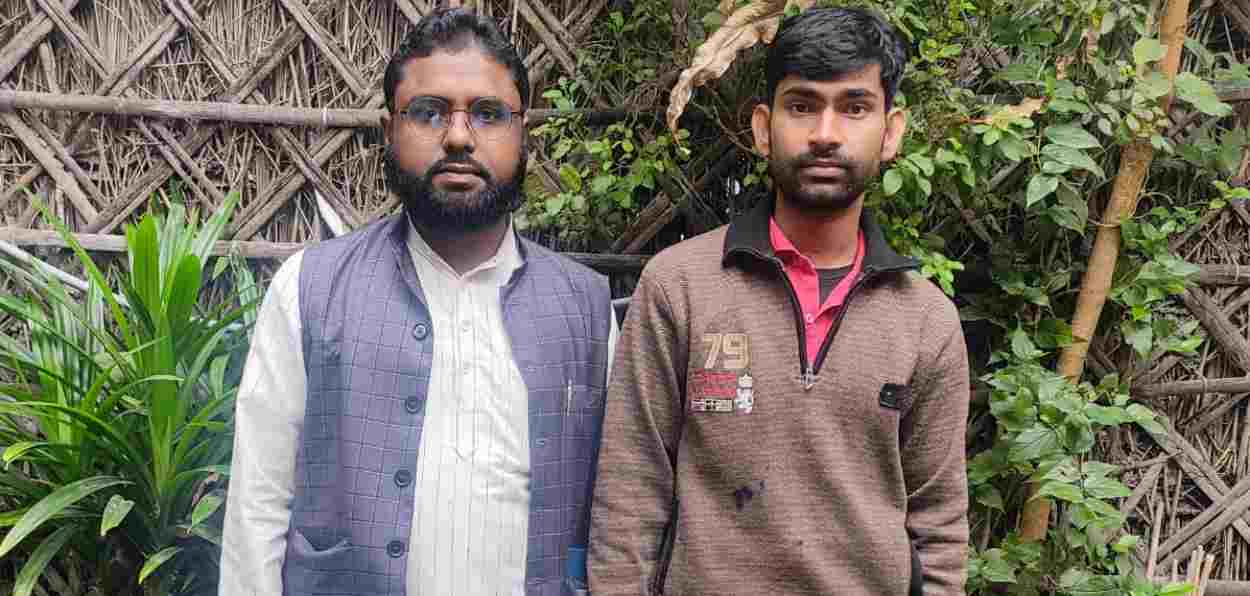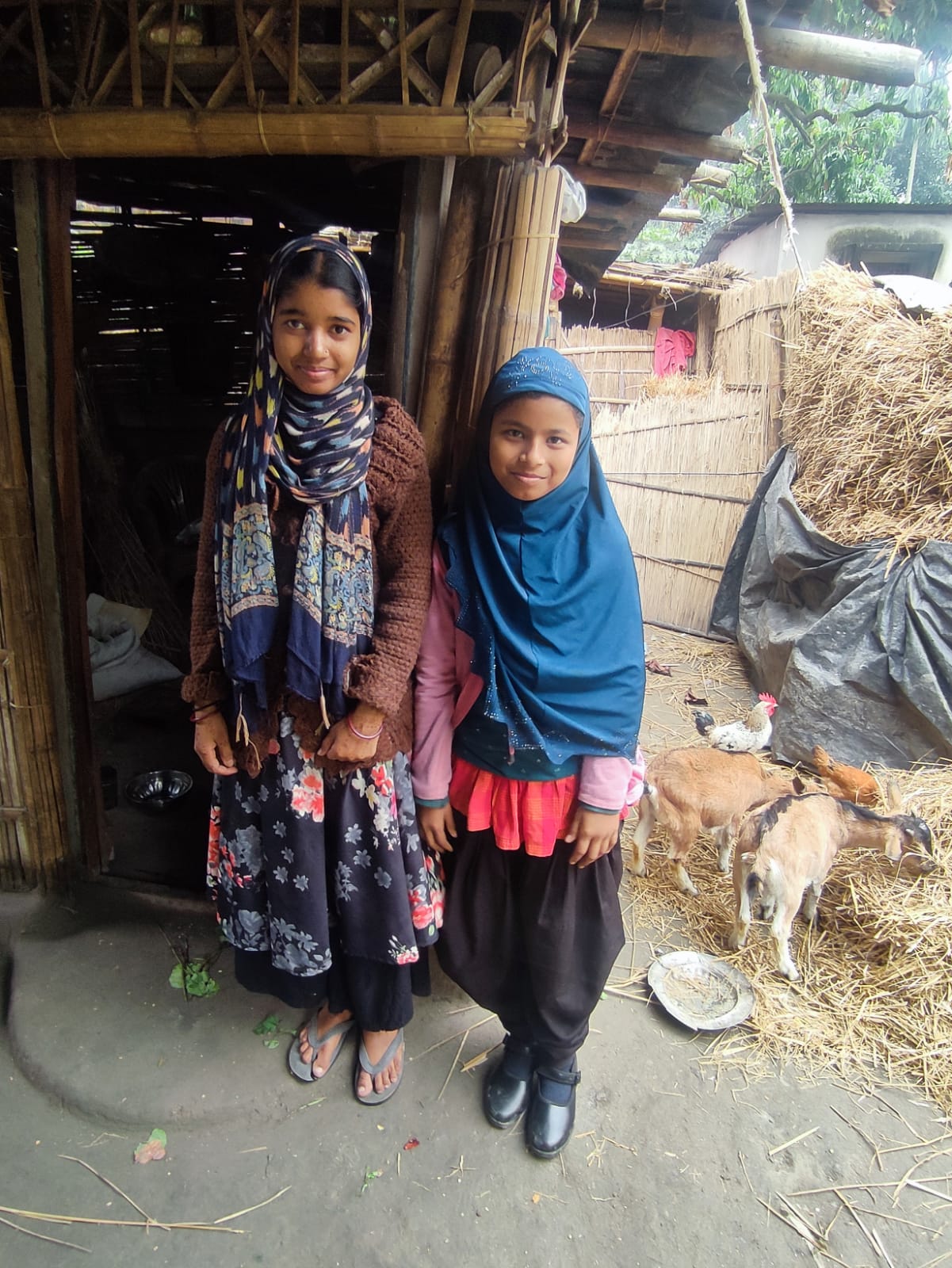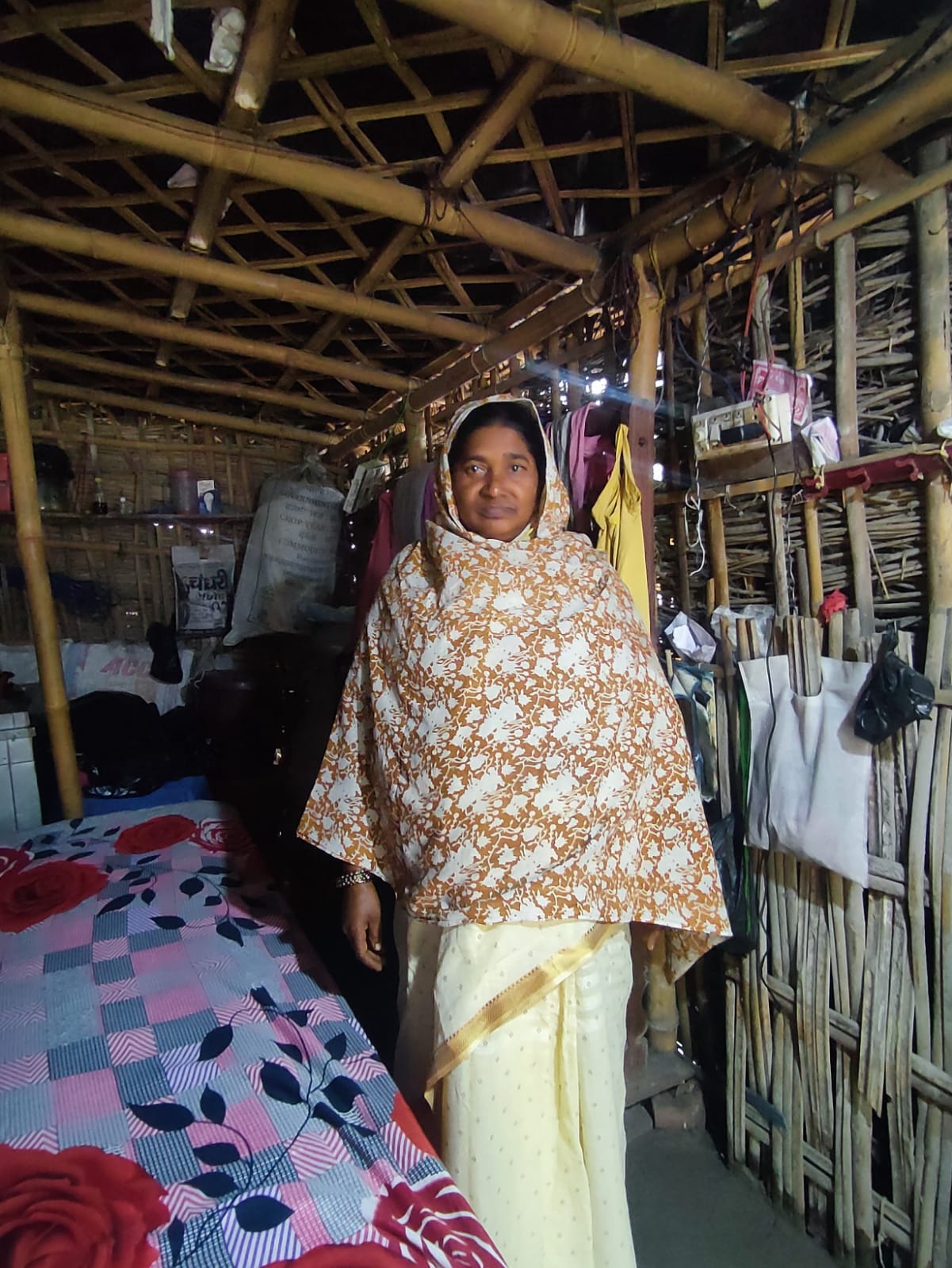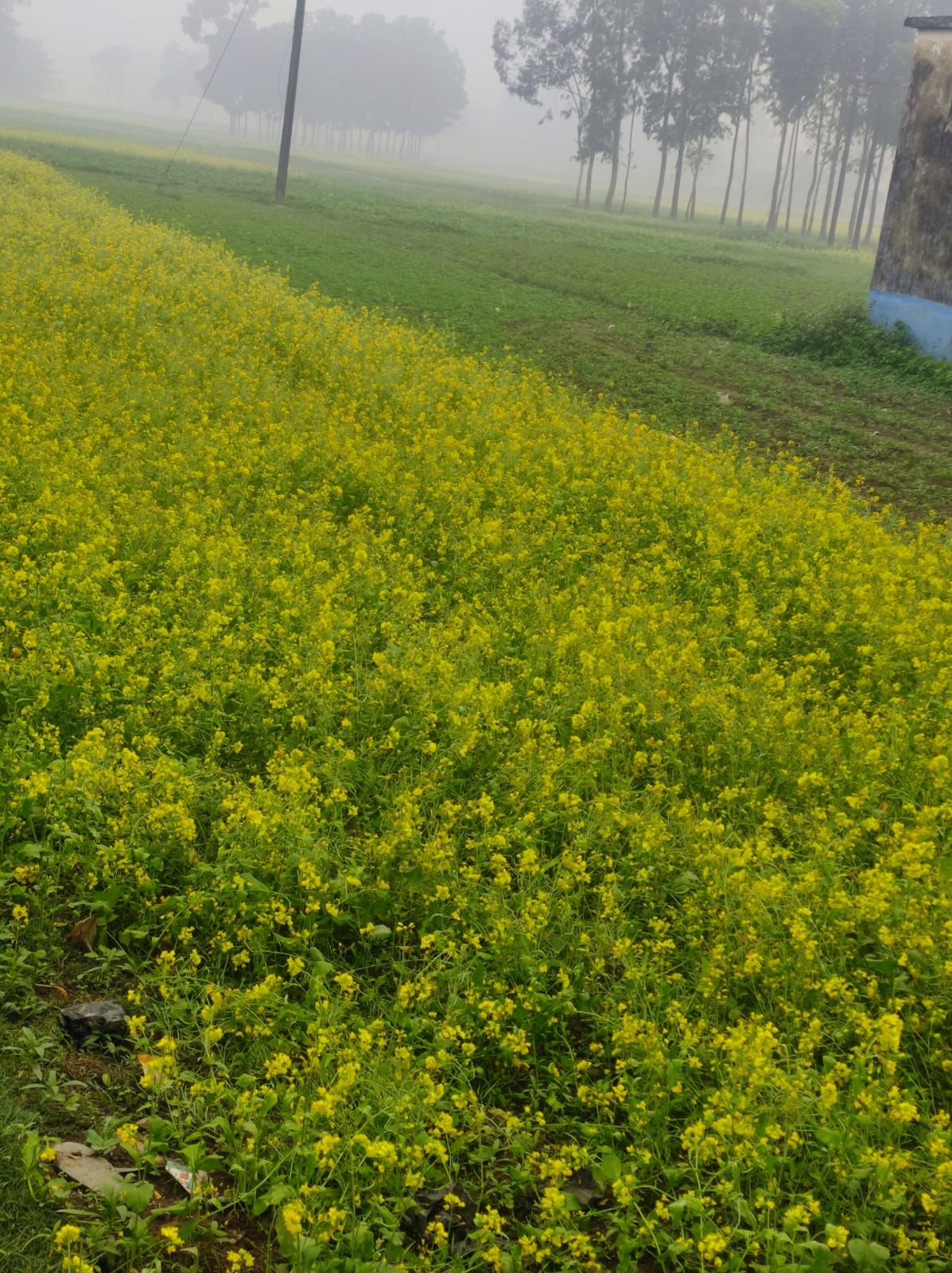
Rita Farhat Mukund
Visiting the picturesque Islampur to its very rural heart in Gunjaria Basti in West Bengal is an experience out of a storybook! During the chilly month of December, the region is wrapped in swirling mists with most people snuggling into their winter warms. Just five kilometers from the Bihar border, the agrarian-rich village is nestled among fields of lush-green paddy fields, tall, rough, fibrous jute, and glimmering bright yellow mustard mazes.
Dr Md Shahbaz Alam, a resident of Gunjaria Basti and Assistant Professor of Sitalkuchi College in the district of Cooch Behar shared the history of the village with Awaz-the Voice.
Surprisingly, for an eminent scholar, Shahbaz turned out to be an alumnus of a local Madarsa. He later went to Delhi to study at Jamia Millia Islamia and the Jawaharlal Nehru University in Delhi. No wonder he is held in great esteem by villagers who number 4470.
 Children of the village
Children of the village
He mentioned that while 90% of the villagers are farmers and a few goldsmiths, barbers, and hold other trades the other 10% have pursued higher studies and he is one of them.
Ganjeria is a unique settlement in North Bengal, where Muslims and 14 Hindu communities reside together peacefully. One can see them working in their paddy, jute, and mustard plant fields. The fish from the nearby ponds and fried fish and curries are some of their favourite dishes.
Jamia Ahle Sunnat Jauharul Uloom in Gunjaria is a private co-educational madrasa where girls and boys study. All children are encouraged to study at least up to high school.
 The ancient Palace
The ancient Palace
The children joyously played around in the village amid animals roaming around blissfully free, cows wandered around chewing on sweet lush grasses, and goats and their kids skipped merrily while hens and roasters ran around the entire village. Mohammed Shahbaz Alam told me, “We love our animals and always keep them free and happy.”
One could see Hindu shrines and temples built across the village standing in strong solidarity. An old mosque is located next to the palace in ruins; both date back to hundreds of years.
The fascinating history of Gunjaria Village dates back over 700 years, "Sarkar Patti" stands as a long-established community within the historic village of "Ganjria" in Dinajpur district, West Bengal, overseen by the jurisdiction of the Islamic Pur department.
Master Mohammed Aslam, a resident of Sarkar Patti, Ganjria, a former professor at the University of Ahl Sunnat Johar Sciences, and an English teacher at Jamia Ahle Sunnat Jauharul Uloom Gunjaria said that the roots of the village go back to 1537-38 AD.
 Ancient mosque of the village
Ancient mosque of the village
This was the period during the Mughal era, a time when invading forces took parts of India through the Nepal route. When the Mughal emperor Humayun, in Delhi, heard of an invasion in the Dinajpur district by Nepal, he sent an Army led by four generals to squash the invaders.
Each of these four generals directed segments of the army to the regions where the invaders had settled, forcing them to retreat. Delighted by the news, the Mughal emperor rewarded the generals by bestowing upon them the regions they had reclaimed. Consequently, the area of
Gunjaria was assigned to Major General Gul Muhammad, and the "Saraye Kori” region was allocated to another.
Over generations, Muslims and Hindus have lived peacefully together in Gunjaria Village. Presently, Shibhu Mahuti is the caretaker of the oldest Hindu temple in the village – a Ma Kali Temple and there are umpteen little shrines dotted in different parts of the village. It was interesting to learn that there were 14 Hindu communities with trades such as farmers, goldsmiths, and barbers from castes such as Yadavs, Thakurs, Jogi, Jadav, Bheri, and many others living in this Muslim-dominated village, sharing the most harmonious relationships, celebrating each others’ festivals and social functions.
A Hindu grandmother was busy cooking vegetables in a clay pot on an old-fashioned mud chulha which people swear makes the most delicious food. After initial hesitation, she opened up with her infectious toothless half smile!
 Nur Jahan
Nur Jahan
All the people in the village speak Surjapuri, an Eastern Indo-Aryan language spoken in many parts of Bengal. Nur Jahan, a shy woman who had seen hard-weathered days shared a few moments of her happiness.
She said she lost her husband at an early age but made sure her five children went to school and two of her children lived with her. Clustered in a room together, they treasured life in its simplicity. With a slight smile, Nur Jahan said her blissful day was when one of her daughters got married, and another proud moment was when one of her sons became a Maulvi,
and another son of hers worked in Delhi. Kumed Karmakar, a gifted Hindu goldsmith beautifully crafts his products in the village supplying them for functions. His skill goes back generations with his great-grandfather Nagendra Karmakar excelling in the craft. He studied up to class 12, he can read English, and his goldsmith skills are enhanced by his education.
 Mustard fields
Mustard fields
The golden glitter of mustard fields, bright green paddy, and jute fields bring in a sizable source of income investing in harvesting to bring great dividends to the residents and overall community of Islampur. Goldsmiths, welders, barbers, and others contribute richly to the growth of the village along with the wisdom and knowledge of great scholars such as Dr Shahbaz Alam.
Nothing greater is teaching people to sustain themselves. As the old saying goes, “Give a man a fish, and you feed him for a day; teach a man to fish and you feed him for a lifetime.” This is the spirit of Gunjaria Village which teaches villagers to look after themselves, cultivate crops, and become fruitful to their locality as well. Another beautiful feature of the village is it celebrates the diversity and unity of India.
How does he visualize the future, I asked Dr Shahbaz Alam.
“My vision for Gunjaria Village is to enhance its abilities so that it serves as a model for the rest of India, to teach villagers to be self-sufficient and resourceful to enrich the entire region as well as live in peaceful harmony in the multiple flavors of diversity”.
ALSO READ: Saigoan: Why Maharashtra leaders come to this village during elections?
In today’s modern era, this ethos holds a universal appeal to people all over the globe and it is a hope that more such self-evolving villages will mushroom in India.
Rita Farhat Mukand is a Siliguri-based independent writer.
